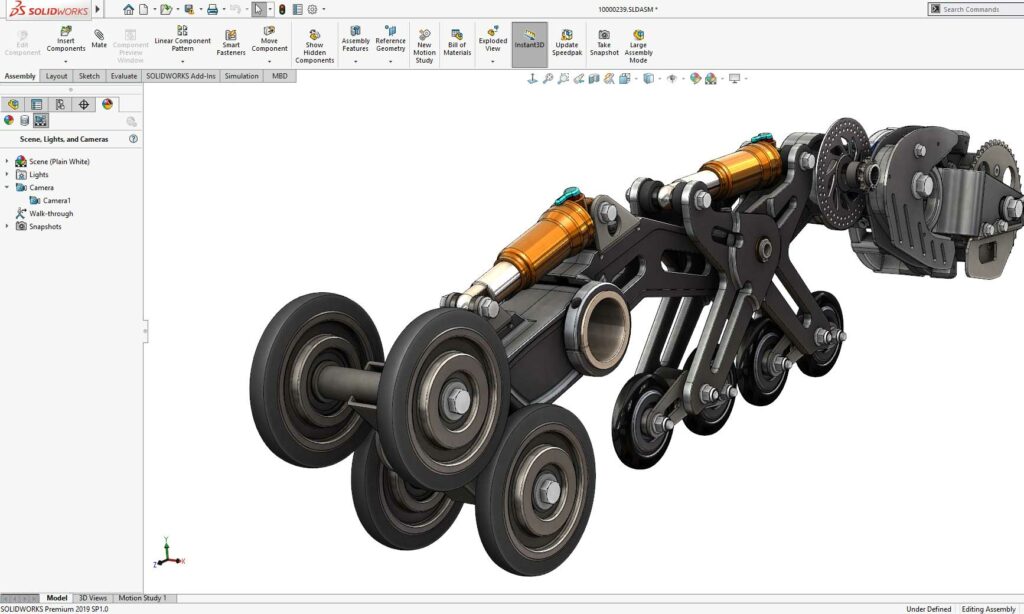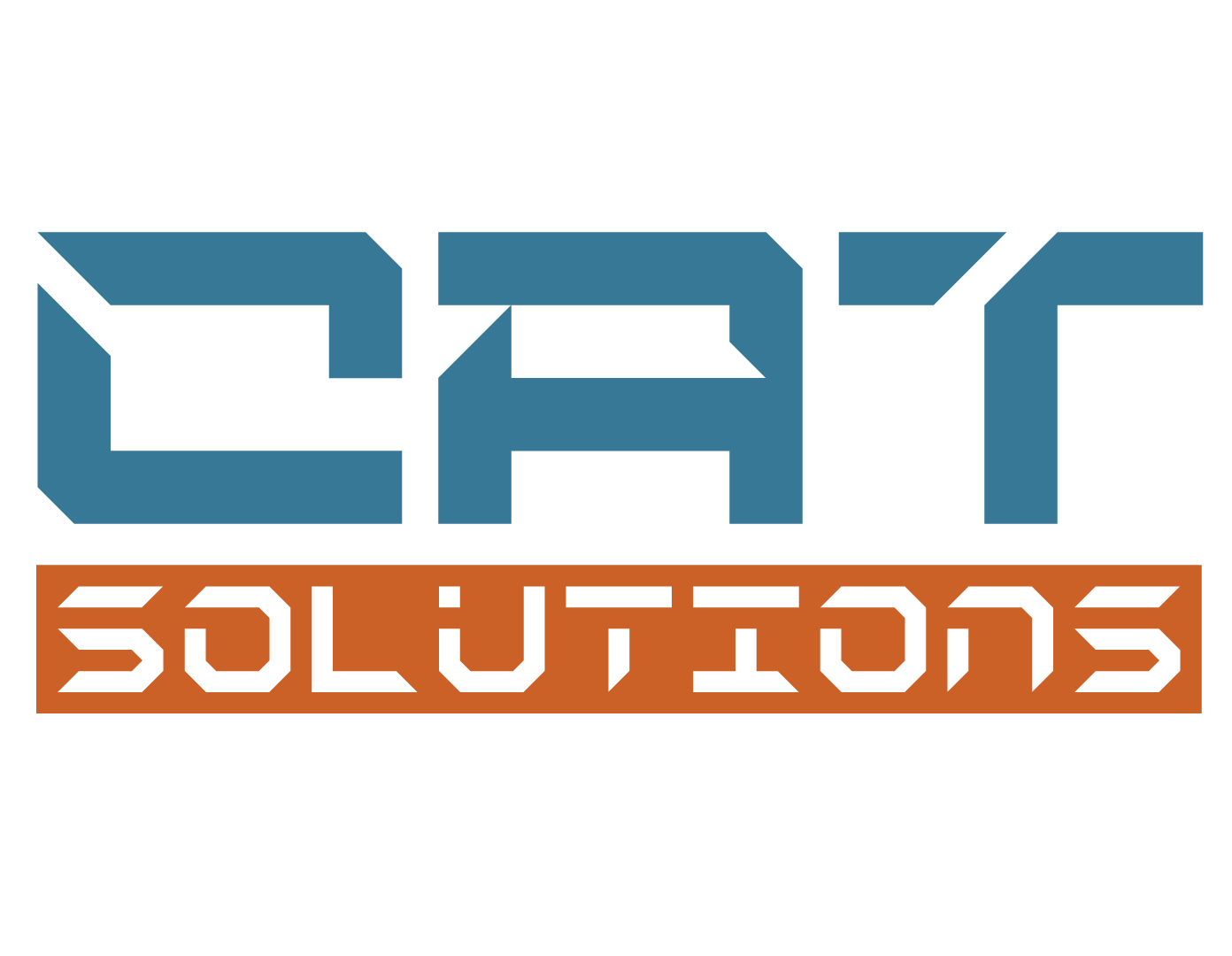The SOLIDWORKS Assemblies training course is a must for anyone who creates or uses assemblies in their SOLIDWORKS designs.
You will learn how to parametrically relate different components in the context of an assembly, master the art of creating and managing all types of mates, save time designing complex mechanisms, create multiple variations of your design, perform quick selections of components, and become confident working fast with large assemblies.

Objectifs:
SOLIDWORKS Assembly Modeling you will expand on assembly topics discussed in Essentials. It also introduces more advanced assembly techniques, like in-context design. These techniques all you to maximize your use of the assembly modeling capabilities on SOLIDWORKS.
SOLIDWORKS ASSEMBLY MODELING TOPICS COVERED:
- Advanced Mate Techniques
- Top-Down Assembly Modeling
- Assembly Features, Smart Fasteners, and Smart Components
- Assembly Editing
- Using Configurations with Assemblies
- Display States and Appearances
- Large Assemblies
- Facility Layout
- Using SOLIDWORKS Treehouse
SOLIDWORKS Assembly Modeling Lessons :
Lesson 1: Advanced Mate Techniques
- SOLIDWORKS Assemblies
- Assembly File Structure
- FeatureManager Design Tree
- Opening Assemblies
- File References
- File Reference Example
- File Names
- Solving Mates
- Subassembly Mates
- Find References
- Update Holders
- Advanced Mate Techniques
- Mate Shortcuts
- Case Study: Mate Shortcuts
- SmartMate while Adding Components
- SmartMate Cursor Feedback
- SmartMates from Within the Assembly
- Mate References
- Design Library Parts
- Capture Mate References
- Multiple Selection Mate References
- Multiple Mate Mode
- Width Free Mate
- Driven Mates
- Using Misaligned Mates
- Misalignment Types
- Copying Multiple Components
- Differences in Mating
- Case Study: Copy With Mates
- Using Copy with Mates
- Copy with Mate Options
- Investigating the Mates
- Fixed Components
- Summary: Inserting and Mating Components
- Adding Components
- Copying Components
- Inserting and Mating Simultaneously
- Mating Existing Components
- Selection Aids
- Advanced Mate Features
- Lock Rotation
- Case Study: Advanced Mate Features
- The Belt / Chain Assembly Feature
- Slot Mate Constraints
- Profile Center Mate
- Valid Faces for Profile Center
- Rack Pinion Mate
Lesson 2: Top-Down Assembly Modeling
- Top-Down Assembly Modeling
- Stages in the Process
- A Note of Caution
- Making Changes to Dimensions
- Case Study: Editing and Building In-context
- Adding Features In-context
- Indicators of Edit Component
- Appearance of Components While Editing
- Inserting a New Part into an Assembly
- Locating the New Part Component
- Virtual Parts
- Building In-context Features
- Common Tools
- Working Outside the Assembly
- Propagating Changes
- Saving Virtual Parts as External86
- In-Context Features
- Update Holders
- External References
- Component Level Symbols
- Feature Level Symbols
- Out of Context
- Putting a Part Back Into Context
- Breaking and Locking External References
- External References
- External Reference Report
- Assembly Design Intent
- InPlace Mates
- SOLIDWORKS File Utilities
- Removing External References
- Why Remove External References?
- Editing to Remove References
Lesson 3: Assembly Features and Smart Components
- Assembly Features and Smart Fasteners
- Case Study: Assembly Features
- Assembly Features
- Special Cases
- Standard Assembly Features
- Hole Series
- Time-Dependent Features
- Hole Series with an Existing Hole
- Smart Fasteners
- Fastener Defaults
- Smart Fasteners Settings
- Hole Series Components
- Changes to Existing Fasteners
- Smart Components
- Case Study: Smart Component
- Make Smart Component
- Inserting the Smart Component
- Inserting Smart Features
- Using Multiple Features and Components
- Using Auto Size
- Flexible Components
- Flexible Part Source
- Making a Part Flexible
- Editing Flexible Components
- Extruded Cut Assembly Feature
Lesson 4: Assembly Editing
- Assembly Editing
- Key Topics
- Editing Activities
- Design Changes
- Finding and Repairing Problems
- Information From an Assembly
- Case Study: Assembly Editing
- Component and Mate Level Errors
- Mate Errors
- Over Defined Mates and Components
- Finding an Over Defining Mate
- MateXpert
- Grouping Mates
- Replacing and Modifying Components
- Working in a Multi-user Environment
- Replacing a Single Instance
- Mated Entities
- Converting Parts and Assemblies
- Parts into Assemblies
- Assemblies into Parts
- Parts into Parts
- Replacing Parts with Assemblies
- Defeature
- Replacing Components Using Save As
- Reloading Components
- Component Patterns
- Pattern Instances
- Linear and Circular Patterns
- Linear Pattern and Rotate
- Pattern Driven Component Pattern
- Chain Pattern
- Mirroring Components
Lesson 5: Using Configurations with Assemblies
- Using Configurations with Assemblies
- Case Study: Assembly Configurations
- Creating Configurations Manually
- Configuration Properties
- Using the Modify Configurations Dialog
- Changing Configurations using the Context Toolbar
- Saving Configurations
- Information from an Assembly
- Managing the Tree Display
- Assembly Evaluation Tools
- Case Study: Hole Alignment
- Introducing: Hole Alignment
- Controlling Dimensions in an Assembly
- Global Variables
- Assembly Equations
- Dimension Names in an Assembly
- Adding Equations
- Creating an Equality
- Equations with Functions
- Equation
- Comments
- Sensors
- Sensor Types and Alerts
- Dimension Sensor
- Dimension
- Proximity Sensors
- Using the Mate Controller
- Mate Positions
Lesson 6: Display States and Appearances
- Display States
- Stored Display States
- Display States vs Configurations
- Display Pane
- Display Pane Icons
- Bulk Selection Tools
- Using Selections
- Selection Methods
- Adding Display States
- Renaming Display States
- Copying a Display State
- Display State Toolbar
- Case Study: Display States
- Previewing Hidden Components
- Configurations and Display States
- Linked Display States
- Advanced Select
- Envelopes
- Using Envelopes
- Appearances, Materials and Scenes
- Appearances Menu
- Using RealView Graphics
- Changing Scenes
- Case Study: Appearances and Materials
- Modifying Texture Maps
- Materials
Lesson 7: Large Assemblies
- Large Assemblies
- Key Topics
- Assembly Modes
- Resolved
- Lightweight
- Large Design Review
- Assembly Visualization
- Visualization Properties
- Elements of the Assembly Visualization Interface
- Editing and Adding Columns
- Lightweight Components
- Opening Lightweight Components
- After the Assembly is Open
- Indicators of Lightweight Status
- Best Practice
- Comparison of Component States
- Large Assembly Mode
- Case Study: Large Assembly Options
- Using SpeedPak
- SpeedPak from the ConfigurationManager
- SpeedPak from Top Level Assembly
- Using Simplified Configurations
- Suppressing Components
- Simplified Configurations
- Simplify
- Advanced Open Options
- Defeature
- Modifying the Structure of an Assembly
- Dissolving a Sub-assembly
- Creating a New Subassembly with Components
- Promoting and Demoting Components
- Flexible Subassemblies
- Using Folders
- Envelope Publisher
- Large Design Review
- Edit Assembly Mode
- Selective Open
- Comparison of Modes and Methods
- Tips for Faster Assemblies
- Appearance and Views
- Set Options
- Mate Considerations
- Drawing Considerations
| Audience | Designers | |
|---|---|---|
| Language | English – French – Arabic | |
| Prerequisites | SOLIDWORKS Essentials or Certified SOLIDWORKS Associate (CSWA) | |
| Duration | 3 Days | |
| Location | On site – Online – Customer site | |
| Software Version | Training is based primarily on SolidWorks 2021. It is relevant to users of SolidWorks 2016 and later. | |
| Level of training | Advanced |
